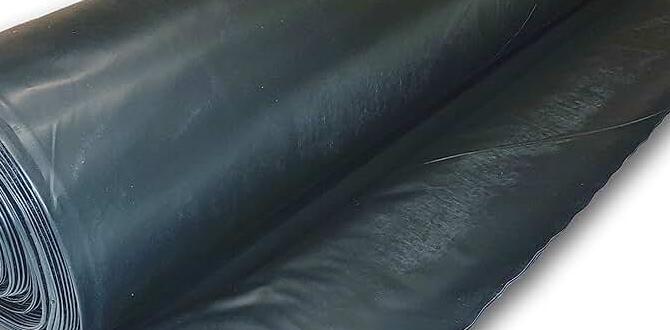Caring for a rabbit indoors is achievable and rewarding with the right setup and knowledge. Provide a safe, stimulating environment with proper housing, diet, hygiene, and exercise to ensure your bunny thrives. This guide offers essential, easy-to-follow steps for happy, healthy indoor rabbit care.
Bringing a rabbit into your home can be a joyous experience! Many people think of rabbits as outdoor pets, but with a little planning, they can be wonderful companions living right alongside us. The good news is, you don’t need a giant yard or complicated equipment to give your bunny a happy life indoors. It’s all about understanding their needs and creating a safe, enriching space for them.
Sometimes, it can feel a bit overwhelming to figure out exactly what goes into indoor rabbit care. Where should they sleep? What should they eat? How do you keep them entertained? Don’t worry; we’ll break it all down into simple, manageable steps. By the end of this guide, you’ll feel confident and ready to provide the best possible home for your furry friend. Let’s get started on creating a little rabbit paradise!
First things first, understanding your rabbit’s basic needs will make their transition indoors a breeze. They are social creatures who need interaction, a proper diet, a safe space to call their own, and plenty of opportunities to exercise and explore mentally. Think of it as creating a small, cozy ecosystem for them within your home.
Essential Foundations for Indoor Rabbit Care
Setting up your rabbit for success starts with the right environment. This isn’t just about a cage; it’s about creating a safe, comfortable, and stimulating home. We’ll cover the crucial elements needed to ensure your bunny feels secure and happy.
1. Choosing the Right Habitat
Your rabbit needs a primary living space – their “home base.” This should be large enough for them to stretch out, stand up on their hind legs, and move around comfortably. While cages are common, many rabbit-savvy individuals prefer larger enclosures for more space.
- Exercise Pens (X-Pens): These metal wire panels can be configured into various shapes and sizes. They offer excellent ventilation and are easy to clean. You can connect multiple panels to create a spacious area. Aim for a pen that is at least 30 inches high to prevent escapes.
- Large Cages: If you opt for a cage, ensure it’s significantly larger than a typical pet store cage. Look for models designed for larger pets or even small dogs, and modify them with a solid bottom (not wire, which can hurt their feet) and adequate ventilation.
- Free-Roaming: For well-trained rabbits, a designated “rabbit-proofed” room or even your whole house can be their domain. This offers the most freedom but requires extensive preparation and supervision.
No matter the setup, the enclosure should have:
- Solid Flooring: Wire floors can cause sore hocks, a painful condition. Ensure the floor is solid, or cover wire with mats, shallow litter, or towels.
- Comfortable Bedding: Use soft, absorbent bedding like paper-based bedding or shredded newspaper lining the bottom. Avoid cedar and pine shavings, as their oils can be harmful to rabbits’ respiratory systems.
- A Litter Box: Rabbits are naturally clean and can be litter trained! A large cat litter box with rabbit-safe litter (e.g., recycled paper pellets, aspen shavings, or plain kiln-dried pine pellets) is ideal. Place hay directly in or next to the litter box, as rabbits like to eat and poop simultaneously.
- Food and Water Stations: Use a heavy ceramic bowl for water and food to prevent tipping. Some rabbits also enjoy a sipper bottle, but water bowls are generally preferred for better hydration and easier cleaning.
2. Diet: The Cornerstone of Rabbit Health
What you feed your rabbit is paramount to their health. Their digestive system is delicate and relies heavily on fiber. A proper diet prevents common health issues like GI stasis and dental problems.
The Essential Components of a Rabbit Diet:
- Hay (80-90% of the Diet): This is the most important food. Fresh, high-quality grass hay (like Timothy, Orchard, or Meadow hay) should be available 24/7. It aids digestion, wears down their continuously growing teeth, and keeps them entertained.
- Fresh Greens (10-15% of the Diet): Offer a variety of leafy greens daily. Examples include romaine lettuce, kale, spinach, parsley, cilantro, and dandelion greens. Introduce new greens slowly to avoid digestive upset. A good rule of thumb is about 1 packed cup of greens per 2 pounds of body weight per day.
- Pellets (5% of the Diet): Choose plain, high-fiber Timothy-based pellets. Avoid muesli-style mixes with seeds, nuts, and dried fruit, as these are unhealthy. The amount of pellets should be limited, typically 1/8 to 1/4 cup per 5 pounds of body weight per day, depending on the rabbit’s age and activity level.
- Treats (Very Sparingly): Small pieces of rabbit-safe fruits (like apple, banana, berries) or vegetables (like carrot) can be given as occasional treats. Think 1-2 tablespoons per day at most.
What to Avoid:
- High-carbohydrate foods like bread, crackers, oats, and cereal.
- Sugary treats or human junk food.
- Dairy products.
- Certain vegetables toxic to rabbits, like iceberg lettuce (which has little nutritional value and can cause diarrhea), potatoes, and rhubarb.
For more detailed information on rabbit nutrition, consult resources like the House Rabbit Society’s nutrition page, a leading authority on rabbit welfare.
3. Hydration: Keeping Your Rabbit Refreshed
Rabbits need constant access to fresh, clean water. This supports their digestion, kidney function, and overall well-being. Clean their water bowl or bottle daily to prevent bacterial growth.
4. Essential Supplies Checklist
Having the right tools makes rabbit care much simpler. Here’s a handy checklist:
| Item | Description |
|---|---|
| Habitat (X-pen or large cage) | Spacious, safe enclosure with solid flooring. |
| Bedding Material | Paper-based, aspen, or clean straw. Avoid pine/cedar. |
| Litter Box | Large enough for the rabbit to turn around in. |
| Rabbit-Safe Litter | Recycled paper pellets, aspen, or kiln-dried pine pellets. |
| Hay Feeder/Rack | Keeps hay clean and easily accessible. |
| Heavy Ceramic Food Bowl | For pellets and greens. |
| Heavy Ceramic Water Bowl | Or a clean sipper bottle. |
| Grooming Tools | Soft brush or comb, nail clippers specifically for small animals. |
| Safe Chew Toys | Wooden toys, cardboard tubes, willow balls. |
| Carrier | For vet visits or transport. |
Creating a Safe and Stimulating Environment
Your rabbit’s home shouldn’t just be a place to sleep; it should be a place where they can thrive! This involves ensuring safety, providing mental stimulation, and allowing for natural behaviors.
1. Rabbit-Proofing Your Home
If your rabbit will have free-roam time outside their main enclosure, safety is paramount. Rabbits are chewers! They need to explore with their mouths, and common household items can be dangerous.
- Electrical Cords: Cover all cords with plastic tubing or cord protectors. Chewing on these can cause severe burns or electrocution.
- Furniture: Protect the legs of wooden furniture with plastic sheeting or blockers.
- Baseboards and Walls: Rabbits might chew on drywall or wallpaper. Block access or cover vulnerable areas.
- Harmful Plants: Many common houseplants are toxic to rabbits. Keep all plants out of reach. The House Rabbit Society has a helpful list of toxic and safe plants.
- Small Objects: Remove small items that could be ingested, such as rug fibers, buttons, or small toys belonging to children or other pets.
- Toxic Substances: Ensure cleaning products, medications, and any other chemicals are stored securely away.
2. Providing Enrichment and Toys
Boredom can lead to destructive behavior and unhappiness in rabbits. Offering a variety of toys and enrichment activities is key to their mental and physical well-being.
- Chew Toys: Essential for dental health and instinctual behavior. Good options include untreated willow branches, applewood sticks, cardboard tubes (toilet paper rolls, paper towel rolls), and untreated cardboard boxes.
- Foraging Toys: Hide pellets or small treats in puzzle toys, treat balls, or even inside crumpled paper bags to encourage natural foraging behavior.
- Digging Boxes: A shallow bin filled with hay, shredded newspaper, or rabbit-safe soil can satisfy their digging instincts.
- Tunnels and Hideouts: Rabbits are prey animals and feel safer with places to hide. Cardboard boxes with holes cut out, cat tunnels, or commercially made rabbit hideouts provide security.
- Interaction: Spend time with your rabbit! Sit on the floor with them, offer gentle pets, and let them explore around you.
3. Socialization and Handling
Rabbits can be shy at first, but with patience and gentle interaction, they can become incredibly affectionate. Building trust is crucial.
- Gentle Approach: Always approach your rabbit calmly. Get down on their level and let them come to you. Avoid sudden movements or chasing them.
- Petting: Most rabbits enjoy being petted on their forehead, cheeks, and along their back. Avoid petting their belly, chin, or feet, as these areas can be more sensitive.
- Picking Up: Rabbits often dislike being picked up, as it makes them feel vulnerable. If you must pick them up, support their hindquarters firmly to prevent them from kicking out and injuring themselves. Never pick them up by their ears or scruff.
- Supervision: Always supervise interactions between your rabbit and children or other pets.
Health and Hygiene Practices
Keeping your indoor rabbit healthy involves regular grooming, a clean living space, and knowing when to seek veterinary care.
1. Litter Training
Most rabbits can be litter trained with consistency. Here’s how:
- Choose the Right Box: Use a large cat litter box.
- Fill with Safe Litter: Use recycled paper pellets, aspen shavings, or plain kiln-dried pine pellets. Avoid clay or clumping litters, as they can be ingested and cause blockages.
- Add Hay: Place a generous amount of fresh hay in one end of the litter box. Rabbits like to eat hay while they eliminate.
- Observe Habits: Notice where your rabbit tends to poop and pee. Place the litter box in that corner or area.
- Clean Up Accidents: If accidents happen outside the box, clean them thoroughly with a vinegar and water solution to remove scent and prevent them from returning to the spot.
- Positive Reinforcement: Praise your rabbit or offer a small, healthy treat when you see them using the litter box.
2. Grooming
Regular grooming is essential for your rabbit’s health and comfort.
- Brushing: Rabbits shed heavily, especially during seasonal molts. Brush your rabbit a few times a week, and daily during heavy molts, to remove loose fur. This prevents them from ingesting too much fur, which can lead to dangerous hairballs (GI stasis). Use a soft pet brush or a comb designed for rabbits.
- Nail Trimming: Rabbit nails grow continuously and need to be trimmed every 4-6 weeks. Use sharp, guillotine-style nail clippers designed for small animals. Be careful to avoid cutting the quick (the pink part of the nail), which contains blood vessels and nerves. If you’re unsure, ask your vet or a groomer to show you how.
- Bathing: Rabbits are meticulous groomers and rarely need baths. In fact, bathing can be very stressful and even dangerous for them, potentially leading to shock or hypothermia. Only bathe a rabbit if specifically instructed to do so by a veterinarian for medical reasons.
3. Veterinary Care
Finding a rabbit-savvy veterinarian is one of the most important steps you can take. Not all vets are experienced with rabbits.
- Annual Check-ups: Schedule annual wellness exams, even if your rabbit seems healthy. This allows your vet to catch potential problems early.
- Spaying/Neutering: This is crucial for health and behavior. Spaying female rabbits drastically reduces the risk of uterine cancer, which is very common. Neutering males reduces territorial marking and aggression. It’s generally recommended between 4-6 months of age.
- Common Health Concerns: Be aware of signs of illness, such as changes in appetite or water intake, lethargy, diarrhea, difficulty breathing, or changes in droppings. Rabbits are prey animals and will hide illness until they are very sick. If you notice any concerning signs, contact your vet immediately.
- Dental Health: Rabbit teeth grow throughout their lives. A diet rich in hay is the best way to keep them worn down. If your rabbit shows signs of dental pain (drooling, decreased appetite, overgrown front teeth), see your vet.
The Rabbitors.info veterinarian finder can help you locate experienced rabbit vets.
Exercise and Mental Stimulation
Indoor rabbits thrive when they have opportunities to move, explore, and engage their minds. This is crucial for their physical health and emotional well-being.
1. Daily Exercise Requirements
Rabbits need several hours of supervised exercise time outside their main enclosure each day. This allows them to run, jump, and explore.
- Supervised Playtime: Aim for at least 4-5 hours of free-roam time daily in a rabbit-proofed area. This can be a single room or a larger section of your house.
- Safe Space: Ensure the area is safe and free of hazards like electrical cords, toxic plants, and small objects that could be ingested.
- Encourage Movement: Provide tunnels, ramps, and varied surfaces to encourage running and jumping.
2. Interactive Play
Engage with your rabbit during their exercise time.
- Gentle Play: Sit on the floor and let your rabbit interact with you. They might b




